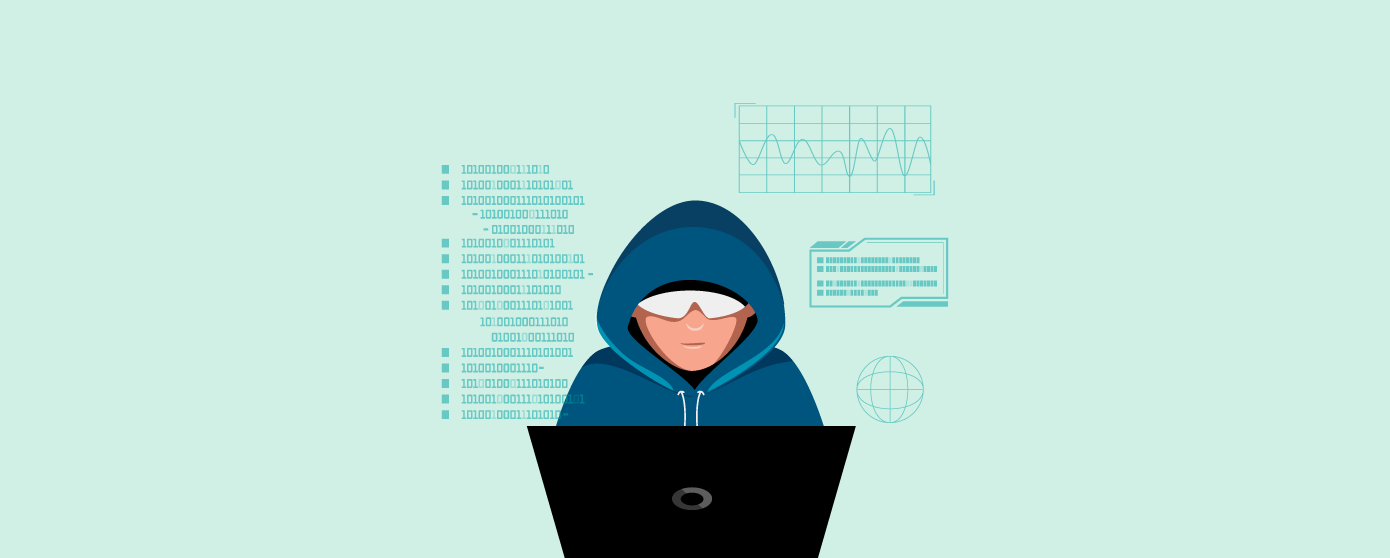How Do Websites Get Hacked?
We witnessed an unprecedented surge in cyberattacks, as highlighted in the latest State of Application Security 2025 Annual Report.
AppTrana WAAP blocked over 7.7 billion attacks across websites and APIs under its protection.
Every website is at risk, regardless of whether it is a simple blog, a portfolio showcase, a small cupcake business, or a dynamic e-commerce platform.
Why would someone hack my website? How do websites get hacked?
Watch this brief video to learn how do websites get hacked. Then, read on as this article provides detailed answers to these questions and shares effective ways to protect your website.
Why Are Hackers Attacking Websites?

Attackers are constantly crawling and snooping around websites to identify vulnerabilities to infiltrate the website and do their bidding. While a financial motive drives many website hacks, there are several other reasons why websites get hacked. Here are the hacker’s motivations:
Financial Gains
Data suggests that 86% are motivated by money! Hackers can make substantial sums of money by hacking even websites belonging to small, localized businesses. How?
- Misusing data – Hackers could gain access to sensitive user data through phishing and social engineering attacks, malware, brute force attacks, and so on. Using the stolen data, they could engage in financial fraud, identity theft, impersonation, etc., to transfer money from the users’ bank accounts, apply for loans with the stolen credentials, file for federal benefits, create scams through fake social media accounts, and so on.
- Selling data on the dark web – Data is the new oil, and hackers stand to make massive amounts of money by selling user/ business data on the dark web. Cybercriminals purchase and leverage stolen data to orchestrate scams, identity thefts, financial fraud, etc. Scammers purchase such data to craft personalized phishing messages or highly targeted ad fraud.
- SEO Spam – Spamdexing or SEO Spam is a highly profitable method used by hackers to reduce the SEO rankings of a website and reroute legitimate users to spam websites. This is done by injecting backlinks and spam into the user input fields on the website. By redirecting users to spam websites, the hackers could steal data, gain access to credit card information through illegitimate purchases, etc.
- Spreading Malware – Hackers often hack websites to spread malware, including spyware and ransomware, to website visitors. They could be spreading malware for their own benefit (blackmail companies to pay a ransom, selling patented information, etc.) or for other cybercriminals, competitors, or even nation-states. In either case, they make large sums of money.
Disruption of Services
Through website hacking, attackers may want to render a website useless or unavailable to legitimate users. DDoS attacks are the best example of service disruption by attackers.
Hackers could use this as a smokescreen for other illegal activities (stealing information, modifying websites, vandalism, money extortion, etc.) or simply shut down the website or reroute web traffic to competitor/ spam websites.
Corporate Espionage
Some companies hire hackers to steal confidential information (business/ user data, trade secrets, pricing information, etc.) from competitors. They also leverage website hacking to launch attacks on targeted websites. They could leak confidential information or make the website unavailable, damaging the competitor’s reputation.
Hacktivism
In some cases, hackers are not motivated by money. They simply want to make a point – social, economic, political, religious, or ethical. They leverage website defacements, ransomware, DDoS attacks, leaking confidential information, etc.
State-Sponsored Attacks
Often, nation-states hire hackers to orchestrate political espionage or cyber warfare on rival nation-states, political opponents, etc. Web hacking is used for everything from stealing classified information to causing political unrest and manipulating elections.
Personal Reasons
Hackers could also engage in hacking for their own amusement, personal revenge, just proving a point, or plain boredom.
How Do Websites Get Hacked?

Weak/ Broken Access Controls
Access control refers to authorization, authentication, and user privileges to the website, servers, hosting panel, social media forums, systems, network, etc. Via access control, you can define who gets access to your website, its various components, data, and assets, and how much control and privilege they are entitled to.
To bypass authentication and authorization, hackers often resort to brute-force attacks. These include guessing usernames and passwords, employing generic password combinations, utilizing password generator tools, and resorting to social engineering or phishing emails and links.
The websites at a higher risk of such hacks are ones that:
- Do not have a strong policy and provisioning process about user privileges and authorizations
- Do not enforce strong passwords
- Do not enforce a two-factor/ multi-factor authentication policy
- Do not regularly change passwords, especially after an employee has left the organization
- Do not require HTTPS connections
Here are 7 habits to secure your websites
Examining Open-Source Web Development Components for Flaws/ Misconfigurations
There is an ever-increasing reliance on open-source code, frameworks, plugins, libraries, themes, and so on in today’s web development practice, where developers demand speed, agility, and cost-effectiveness. And, Node.js has become a go-to technology in this context.
Despite the speed and cost-effectiveness they infuse in web development, they are a rich source of vulnerabilities attackers can exploit to orchestrate hacking attempts.
Often, open-source code, themes, frameworks, plugins, etc., tend to get abandoned or not be maintained by developers. This means no updates or patches, and these outdated/ unpatched components on the website that continue to use them only exacerbate the associated risks.
For example, in the context of Node.js programming, there exists a vulnerability known as CWE-208 or timing attacks, which can expose information. This flaw enables malicious individuals to eavesdrop on network traffic and gain access to confidential data transmitted across the network. Here is a detailed blog on how to secure NodeJS API.
Hackers spend far more time, effort, and resources examining code, libraries, and themes for vulnerabilities and security misconfigurations. They try to unearth legacy components and old software versions, source code from high-risk websites, instances where plugins/ components are disabled instead of being removed from the server along with all its files, etc., that provide entry points to orchestrate attacks.
Identifying Server-Side Vulnerabilities
A vulnerability is a weakness or lack of proper defense that an attacker can exploit to get unauthorized access or perform unauthorized actions. Attackers can run code, install malware, and steal or modify data by exploiting vulnerabilities.
Hackers spend immense amounts of time and effort to determine the web-server types, web-server software, server operating system, etc., through the examination of factors such as:
- IP domain
- General Intelligence (listening on social media, tech sites, etc.)
- Session cookie names
- The source code used on web pages
- Server setup security
- Other components of backend technology
Having determined and assessed the backend technology of your website, the hackers use various tools and techniques to identify and exploit vulnerabilities and security misconfigurations.
For instance, port scanning tools are used by hackers to identify open ports that serve as gateways to the server and, thereon, server-side vulnerabilities. Some scanning tools unearth administrative apps protected by weak or no passwords.
Identifying Client-Side Vulnerabilities
Hackers identify known vulnerabilities on the client side, such as SQL Injection vulnerabilities, XSS vulnerabilities, CSRF vulnerabilities, and so on, that allow them to orchestrate hacks from the client side.
Hackers also expend ample time and effort to unearth business logic flaws, such as security design flaws, enforcement of business logic in transactions and workflows, etc., to hack websites from the client side.
Looking for API Vulnerabilities
Most websites today use APIs to communicate with the backend systems. Exploiting API vulnerabilities enable hackers to get deep insights into the internal architecture of your website. Indicators of API security misconfigurations include:
- Poor credentials
- Broken/ weak access controls
- Accessibility of tokens from query strings, variables, etc.
- Inadequate validation
- Little or no encryption
- Business logic flaws
To gain these insights, hackers deliberately send invalid parameters, illegal requests, etc., to the APIs and examine the error messages that return. These error messages may contain critical information about the system, such as database type, configurations, etc., which the hacker can piece together over time and exploit identified vulnerabilities later. This is how websites are hacked in a growing number of cases today.
Learn more about the API-based vulnerability identified by OWASP API Top 10.
Shared Hosting
When your website is hosted on a platform with hundreds of other websites, the risk of being hacked is high, even if one of the websites has a critical vulnerability. Getting a list of web servers hosted at a specific IP address is easy, and it is only a matter of finding the vulnerability to exploit. The risk heightens further if your website is not secured right from the development stage.
No matter how websites get hacked, it brings reputational damage, customer attrition, loss of trust, and legal consequences to organizations.
Here’s a detailed guide on how to fix a hacked website to help you recover quickly and secure your assets
How to Protect a Website from Hackers?
Always On Scanning
Asking your developers to look for those vulnerabilities will take days. Even if they get time to point out issues, how would they know of zero-day issues? Are they really following the list of a dozen serious and not-so-serious issues published daily? Or do you have an internal security research team?
With always-on scanning, you get reports on found vulnerabilities, which can be passed on to the application developers for patching.
An assessment process must constantly keep track of commonly exploited and new zero-day vulnerabilities announced by vendors and check for the same in your website’s technology stack.
An intelligent and holistic web application scanner enables you to continuously and effectively identify vulnerabilities, gaps, and misconfigurations.
Get Website Penetration Testing
Businesses handling big data consider business logic flaws specific to an application. Only a security expert can test and suggest mitigation steps for this flaw.
Whenever you make major changes to an application, request website penetration testing with a certified expert.
Sync Testing and Patching
Wouldn’t it be great if you fixed security holes the same day they were found?
But we all know how that plan goes.
Loaded lists developers, resource constraints, dependency on 3rd party vendors to release patches and ever-changing application code are just a few reasons why fixing a vulnerability takes about 200 days. IF and AFTER they are found in the first place. Stopping hackers from accessing your website gets difficult.
Of course, you cannot stop everything else and work on making the perfect applications. How about blocking hackers until security issues are fixed?
Get an application security solution with continuous scanning and WAF offering.
Indusface AppTrana performs vulnerability scanning, highlighting critical weaknesses, while allowing security teams to virtually patch these identified vulnerabilities.
Integrate WAAP into CI/CD Pipeline
The integration of a WAAP platform into the CI/CD pipeline empowers development teams with real-time visibility into potential security issues, enabling swift remediation in staging and production environments.
Moreover, by leveraging WAAP, development teams can continuously learn from detected vulnerabilities and security incidents. It drives the evolution of coding practices and strengthens website security.
Prepare for DDoS Battles
Application layer DDoS is one of the biggest challenges for businesses across the world. Is your business prepared for it? There is no absolute security against the attack apart from monitoring incoming application traffic to identify red flags.
Introduce rate limits at various levels, such as network, server, and application layers, to restrict the number of requests or connections allowed from a single source or IP address. This helps prevent overwhelming your resources during a DDoS attack.
Stop Spam
Spam filtering systems, such as CAPTCHA, can help distinguish between genuine users and automated bots, reducing the potential for malicious activities.
Regular monitoring of website traffic and analyzing patterns can aid in identifying zombie bot traffic. When detected, immediate action should be taken to block and blacklist these malicious sources. Once the zombie bot traffic is identified, ensure that you have a prompt response in blocking it.
These proactive approaches significantly reduce the chances of successful hacking attempts and enhance overall website protection.
Already dealing with a compromised site? Learn how to clean, recover, and secure a hacked website using a structured recovery plan
Stay tuned for more relevant and interesting security articles. Follow Indusface on Facebook, Twitter, and LinkedIn.

 April 17, 2025
April 17, 2025





